Kia Sportage: Interior light adjustment switch
The brightness of the instrument panel illumination is changed by pressing the illumination control button ("+" or "-") when the ignition switch or ENGINE START/STOP button is ON, or the tail lamps are turned on.
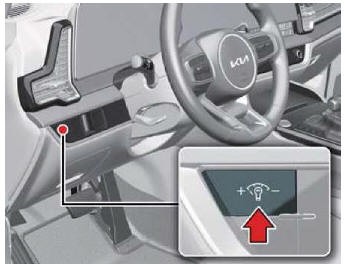
WARNING
Never adjust the instrument cluster while driving. This could result in loss of control and lead to an accident that may cause DEATH, SERIOUS INJURY, or property damage.
- If you hold the illumination control button ("+" or "-"), the brightness will be changed continuously.
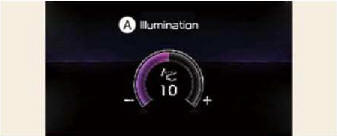
- illumination
- If the brightness reaches to the maximum or minimum level, an alarm will sound.
Gauges
The gauges display various information such as the speed of the vehicle, and so on.
Speedometer
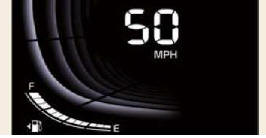
Type A
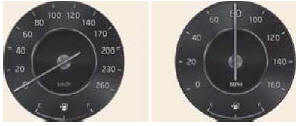
Type B (km/h)/ (mph)
The speedometer indicates the speed of the vehicle and is calibrated in miles per hour (mph) and kilometers per hour (km/h).
Tachometer
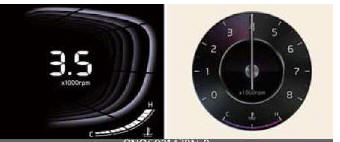
Type A / Type B
The tachometer indicates the approximate number of engine revolutions per minute (rpm).
Use the tachometer to select the correct shift points and to prevent lugging and/ or over-revving the engine.
CAUTION
Do not operate the engine within the tachometer's RED ZONE. This may cause severe engine damage.
Engine coolant temperature gauge

Type A / Type B
This gauge indicates the temperature of the engine coolant when the ENGINE START/STOP button is ON.
CAUTION
If the gauge pointer moves beyond the normal range area toward the "H" position, it indicates overheating that may damage the engine.
Do not continue driving with an overheated engine. If your vehicle overheats, refer to "If the engine overheats"
WARNING
Never remove the radiator cap when the engine is hot. The engine coolant is under pressure and could severely burn.
Wait until the engine is cool before adding coolant to the reservoir.
Fuel gauge
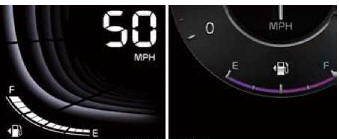
Type A / Type B
This gauge indicates the approximate amount of fuel remaining in the fuel tank.
NOTICE
- The fuel tank capacity is given in "Recommended lubricants and capacities"
- The fuel gauge is supplemented by a low fuel warning light, which will appear when the fuel tank is nearly empty.
- On inclines or curves, the fuel gauge pointer may fluctuate or the low fuel warning light may come on earlier than usual due to the movement of fuel in the tank.
WARNING
Fuel gauge
Running out of fuel can expose vehicle occupants to danger.
You must stop and obtain additional fuel as soon as possible after the warning light comes on or when the gauge indicator comes close to the " E" level.
CAUTION
Avoid driving with an extremely low fuel level. Running out of fuel could cause the engine to misfire, which could damage the catalytic converter.
NOTICE
The fuel display may not be accurate if the vehicle is on an incline.
READ NEXT:
 Odometer
Odometer
Type A / Type B
The odometer Indicates the total distance
that the vehicle has been driven
and should be used to determine when
periodic maintenance should be performed.
Odometer range: 0
 LCD display
LCD display
The LCD display modes can be changed
with the control buttons.
LCD Display Control
MODE button for changing
modes
MOVE switch for
changing
items
OK: SELECT/RESET button for s
SEE MORE:
 Description and Operation | Repair procedures
Description and Operation | Repair procedures
Description
EPS (Electric power steering, Column assist type) system uses an electric motor to assist the steering force and it is ail engine operation independent steering system.
EPS control module controls the motor operation according to information received from the each sensor and C
 Starter
Starter
Components and Components Location
Components
Front housing
Starter solenoid assembly
Lever
Lever packing
Planet shaft assembly
Planetary gear assembly
Packing
Shield
Amature assembly
Brush holder assembly
Yoke assembly
Rear housing
Through bolt
Repair procedu
Content
- Home
- Kia Sportage - Fifth generation (NQ5) - (2022-2026) - Owner's Manual
- Kia Sportage - Second generation (JEKM) (2005-2015) - Body Workshop Manual
- Kia Sportage Third generation (SL) - (2011-2016) - Service and Repair Manual
- Sitemap
- Top articles